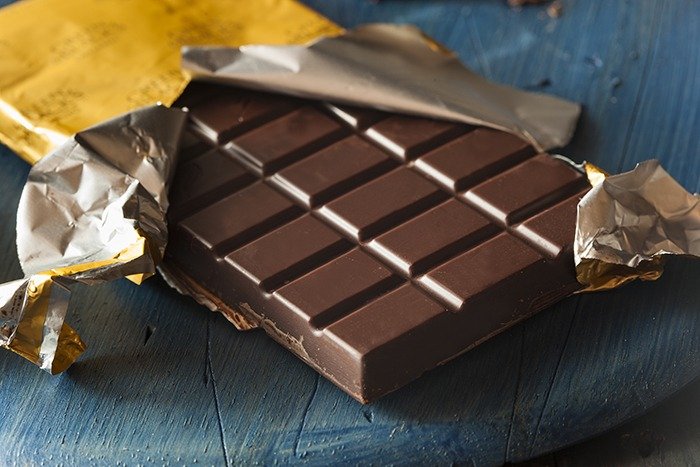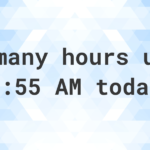How Long is Chocolate Good For?
Chocolate is a beloved treat enjoyed by many around the world. Its rich flavor and versatility make it a popular ingredient in various desserts and snacks. However, like all food products, chocolate has a shelf life, and understanding how long it remains good can help you enjoy it at its best. This article will explore the shelf life of different types of chocolate, factors that affect its longevity, storage tips, and how to tell if chocolate has gone bad.
Understanding Chocolate Shelf Life
The shelf life of chocolate refers to the period during which it retains its quality, flavor, and safety for consumption. The shelf life can vary significantly depending on the type of chocolate, its ingredients, and how it is stored.
Types of Chocolate and Their Shelf Life
Different types of chocolate have varying shelf lives due to their composition. Here’s a breakdown of the typical shelf life for various chocolate types:
| Type of Chocolate | Unopened Shelf Life | Opened Shelf Life |
|---|---|---|
| Dark Chocolate | 2 years | 1 year |
| Milk Chocolate | 1 year | 6-8 months |
| White Chocolate | 1 year | 6-8 months |
| Chocolate with Fillings | 6-12 months | 3-6 months |
| Compound Chocolate | 1 year | 6-8 months |
Factors Affecting Chocolate Shelf Life
Several factors can influence how long chocolate remains good:
- Ingredients: The presence of dairy, nuts, or fruits can shorten the shelf life of chocolate. Dark chocolate, which typically contains fewer perishable ingredients, tends to last longer than milk or white chocolate.
- Storage Conditions: Chocolate should be stored in a cool, dry place away from direct sunlight and strong odors. Ideal storage temperatures range from 60°F to 70°F (15°C to 21°C).
- Packaging: Proper packaging can help protect chocolate from moisture and air exposure, both of which can lead to spoilage. Keeping chocolate in its original packaging or in an airtight container can extend its shelf life.
- Humidity: High humidity can cause chocolate to develop a gritty texture or mold. It is essential to keep chocolate in a low-humidity environment.
How to Store Chocolate Properly
To maximize the shelf life of chocolate, follow these storage tips:
- Cool, Dry Place: Store chocolate in a cool, dry area away from direct sunlight. Avoid storing it near heat sources like ovens or stoves.
- Avoid Refrigeration: While refrigeration can extend the shelf life of chocolate, it can also negatively affect its texture and flavor. If you must refrigerate chocolate, ensure it is in an airtight container to prevent moisture and odor absorption.
- Seal Properly: After opening, reseal chocolate in its original packaging or transfer it to an airtight container to minimize exposure to air and moisture.
Signs That Chocolate Has Gone Bad
Chocolate can still be safe to eat after its best-by date, but it may not taste as fresh. Here are some signs that chocolate may have gone bad:
- Appearance: Look for a dull or whitish film on the surface, known as chocolate bloom. This occurs when cocoa butter or sugar rises to the surface and crystallizes. While it may affect the appearance, chocolate with bloom is still safe to eat.
- Texture: If chocolate feels gritty or has developed a strange texture, it may be a sign of spoilage.
- Smell: A rancid or off smell indicates that the chocolate has deteriorated and should be discarded.
- Taste: If chocolate tastes sour or has an unusual flavor, it is best to avoid consuming it.
Chocolate Expiration Dates vs. Best-By Dates
Many chocolate products come with a “best by” date rather than an expiration date. This date indicates the period during which the chocolate is expected to maintain optimal flavor and quality. However, chocolate can often be consumed safely beyond this date if it has been stored correctly.
Special Considerations for Different Chocolate Types
Dark Chocolate
Dark chocolate is known for its long shelf life due to its high cocoa content and low moisture levels. When stored properly, unopened dark chocolate can last up to two years. Once opened, it can still be enjoyed for about a year.
Milk Chocolate
Milk chocolate, which contains dairy, has a shorter shelf life. Unopened milk chocolate typically lasts about one year, while opened milk chocolate should be consumed within six to eight months for the best flavor.
White Chocolate
White chocolate, similar to milk chocolate, has a shelf life of about one year when unopened and six to eight months when opened. Despite its name, white chocolate does not contain cocoa solids, which contributes to its shorter shelf life.
Chocolate with Fillings
Chocolates filled with creams, fruits, or other ingredients have a shorter shelf life due to the perishable nature of their fillings. These chocolates can last six to twelve months unopened and should be consumed within three to six months after opening.
Compound Chocolate
Compound chocolate, often used in coatings and confections, has a shelf life of about one year unopened and six to eight months once opened. It is more stable than traditional chocolate due to the use of vegetable fats instead of cocoa butter.
Conclusion
Chocolate is a delightful treat that can last for a considerable amount of time if stored properly. Understanding the shelf life of different types of chocolate, along with the factors that affect it, can help you enjoy your chocolate at its best. By following proper storage practices and being mindful of signs of spoilage, you can ensure that your chocolate remains fresh and enjoyable for as long as possible.
FAQ Section
Q1: How can I tell if my chocolate is still good?
A1: Check for signs of bloom, unusual smells, or changes in texture. If it tastes fine and shows no signs of spoilage, it is likely safe to eat.
Q2: Can I eat chocolate past its best-by date?
A2: Yes, chocolate can often be consumed safely past its best-by date, provided it has been stored correctly and shows no signs of spoilage.
Q3: What is chocolate bloom, and is it safe?
A3: Chocolate bloom is a whitish film that appears on chocolate due to fat or sugar crystallization. While it may affect appearance, it is safe to eat.
Q4: How should I store chocolate to maximize its shelf life?
A4: Store chocolate in a cool, dry place away from sunlight and strong odors. Use airtight containers to minimize exposure to air and moisture.
Q5: Does chocolate need to be refrigerated?
A5: Chocolate does not need to be refrigerated and can be negatively affected by cold temperatures. If refrigeration is necessary, ensure it is in an airtight container.For more detailed information about chocolate and its properties, you can refer to the Wikipedia page on Chocolate.
Summary Table
| Type of Chocolate | Unopened Shelf Life | Opened Shelf Life |
|---|---|---|
| Dark Chocolate | 2 years | 1 year |
| Milk Chocolate | 1 year | 6-8 months |
| White Chocolate | 1 year | 6-8 months |
| Chocolate with Fillings | 6-12 months | 3-6 months |
| Compound Chocolate | 1 year | 6-8 months |
This table summarizes the shelf life of various types of chocolate, providing a quick reference for consumers to understand how long their chocolate can be enjoyed.



